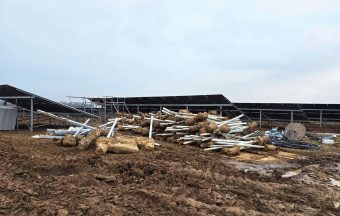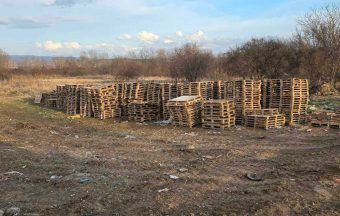The management of construction waste in Serbia is regulated by a series of laws and by-laws, with an emphasis on the Law on Waste Management and the Regulation on the Manner and Procedure for Construction and Demolition Waste Management. These documents provide basic criteria and guidelines for the responsible handling of waste generated during construction projects, including the construction of solar power plants, whether they are ground-mounted or rooftop installations. Although solar power plants generate clean megawatts, waste at construction sites is unavoidable. However, CEEFOR, a company with many years of experience in designing solar power plants, also has expertise in developing waste management plans.
These plans are created specifically based on the aforementioned regulations to forecast the types, amounts, and waste disposal methods at an early stage. One of the recent projects undertaken by CEEFOR involved the construction of a 4.1 MW photovoltaic power plant on the ground, with the total energy output being fed into the distribution system. This project required the installation of more than 7,300 solar panels with an individual power of 650 Wp. The company has developed a waste management plan for this project, which requires implementing the measures outlined in the Regulation.

These measures primarily focus on the separate collection of different types of waste, classification into categories (hazardous and non-hazardous), determining appropriate spaces for their temporary storage, and regulating the final treatment or disposal through cooperation with licensed operators. During construction, the most significant part of the waste will consist of wooden pallets, reels, and accompanying wood materials used for transporting, storing, and installing solar panels, inverters, and cables. Estimates for this project predicted about four tons of wood waste. In comparison, the other sources of waste will be plastic materials, about 0.005 tons (five kilograms), packaging films, protective covers, and other various elements.
A waste management plan was drawn up on the construction site, ensuring that wooden waste is stored in metal containers with a capacity of 10 m³. In comparison, plastic waste is disposed of in separate containers with a capacity of 1.1 m³. Thanks to such a system, materials suitable for recycling or reuse are not mixed with other types of waste or referred to landfills. In practice, wooden pallets that remain intact are returned to manufacturers or distributed to suppliers for subsequent transport processes.
In contrast, damaged ones are usually forwarded to recycling centers, where the wood mass is ground and prepared for secondary use in chipboards, boards, or biofuel. When it comes to plastic, it is treated by washing, sorting, and granulation, after which it becomes suitable for producing new products, which achieves multiple benefits for the economy and the environment. The authorized operator further monitors the dynamics of container filling, the time of removal, and the location where further treatment is performed.
IN FOCUS:
- Four Solar Power Plants in Prnjavor For New Green Kilowatts
- First DC Chargers in Cities Across Serbia
- Naled Advocates For More Efficient Municipal Waste Management in 2025
Roof-mounted Power Plant
Example Another project that was taken as an example of the waste management strategy concerns the construction of a solar power plant on the roof of the building with a total power of 120 kW. Although the capacity and scope of work are smaller than in the previous example, the basic principles of responsible waste management that the CEEFOR company adhered to remain the same.
The power plant consists of 312 solar panels with an individual power of 410 Wp. In this case, recording types of waste, determination of space for temporary storage, labeling, and safe transportation are also applied. The specificity of this project lies in the fact that the roof did not provide a large manipulation area. As a result, waste is collected in smaller containers, which, when filled, are transported to a separate location within the warehouse.

The types of waste generated by this solar power plant project include approximately 0.8 tons of wooden pallets and reels, about one kilogram of plastic waste, around 0.5 kilograms of copper, bronze, and brass, five kilograms of aluminum, 0.5 kilograms of mixed metals, and one kilogram of cables. Due to the relatively small quantities of certain materials, metal waste, and cables are most often collected in one container designated for mixed metals, with clear markings to ensure proper selection. Plastic is disposed of separately in its container, while wood waste is placed on a surface protected from precipitation, as in the previous example. After the installation is complete, the operator takes the waste and transports it to the facilities, where recycling, energy recovery, or, in the worst case, disposed of if some materials are not suitable for reuse.
Regardless of the type and capacity of solar power plants, both CEEFOR projects share a common feature: the critical importance of planning and implementing efficient waste management strategies from the outset of construction. This approach ensures that waste is disposed of responsibly, preventing uncontrolled disposal that could result in illegal landfills and significant environmental damage. CEEFOR adheres to the principles of sustainable development and continuously improves its practices and expertise in the areas where it achieves the best results.
Prepared by Milica Vučković
The story was published in the Energy portal Magazine CIRCULAR ECONOMY



